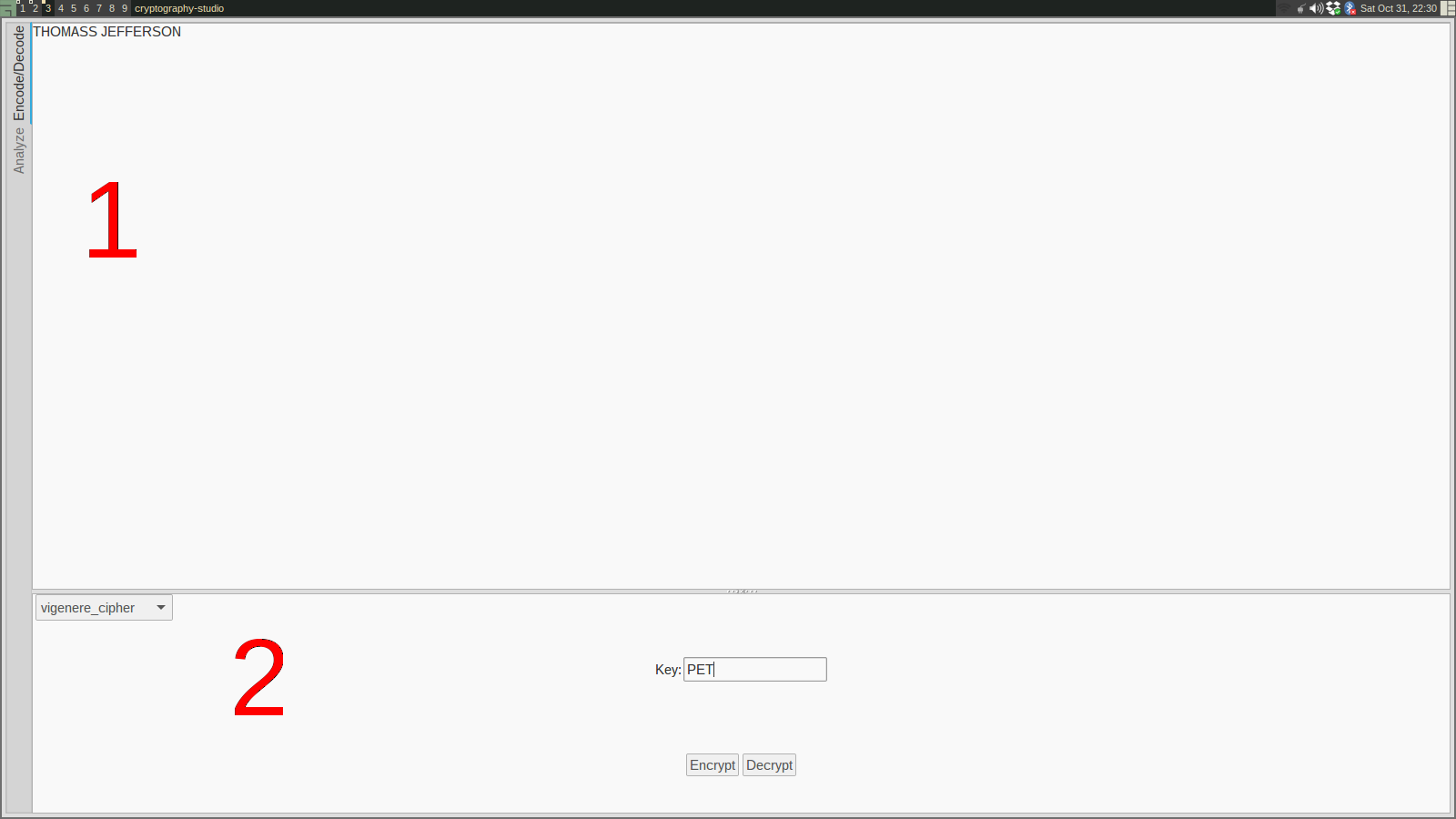NOTE: This repository is no longer maintained!
Cryptography Studio is an application that helps you encrypt and decrypt messages and break various ciphers (provided by the plugins). It was created as a helper tool to minimize the amount of hand calculation when solving homeworks for the course "Cryptography and Network Security" at University of Zagreb.
- encryption and decryption of texts with diferent ciphers
- tools for cryptoanalysis of encrypted texts
- a plugin system that lets you implement (in Python) your own ciphers and cryptoanalysis tools to extend the abilities of the program -- in fact, every implemented cipher is actualy a plugin, the core of the program cannot do anything usefull realy :)
It doesn't break ciphers by itself (yet!) -- it does simple mundane tasks (like n-gram frequency analysis, encryption and decryption).
- Encryption/decryption
- Cryptoanalysis
- Language analysis
- Python 3.5
- GTK+ 3.16
- PyGObject
On ArchLinux dependencies can be installed by runing:
pacman -S gtk3 pygobject
On Ubuntu the following should work (not tested, but it doesn't work on
15.04 because the GTK+ version in official repositories is 3.14):
apt-get install python3 python3-gi gtk+3.0
On Windows download and install (also not tested):
Clone the repository or download and unpack the .zip file.
Run cryptography-studio located at package's root directory (try running it
with python3 if that doesn't work).
The first screenshot shows the Encrypt/Decrypt tab which consists of a text-box (1) that contains a message to be encrypted and a plugin area (2) where an encryption/decryption plugin can be loaded (in this case it's the Vigenere's cipher plugin). Once you click the encrypt button the plaintext in the box is replaced with the ciphertext. By clicking the decrypt button, ciphertext is transformed back to plaintext.
The second image shows the Analyze tab used for cryptoanalysis. In this case there are two text-boxes, one for the original ciphertext (3), and the other for the (possibly) decrypted plaintext. There are two plugin areas here. The bottom one (4) contains a cryptoanalysis plugin (in this case the one for Substitution cipher), and the right one (5) a language anayzer (in this case the N-gram analyzer).

